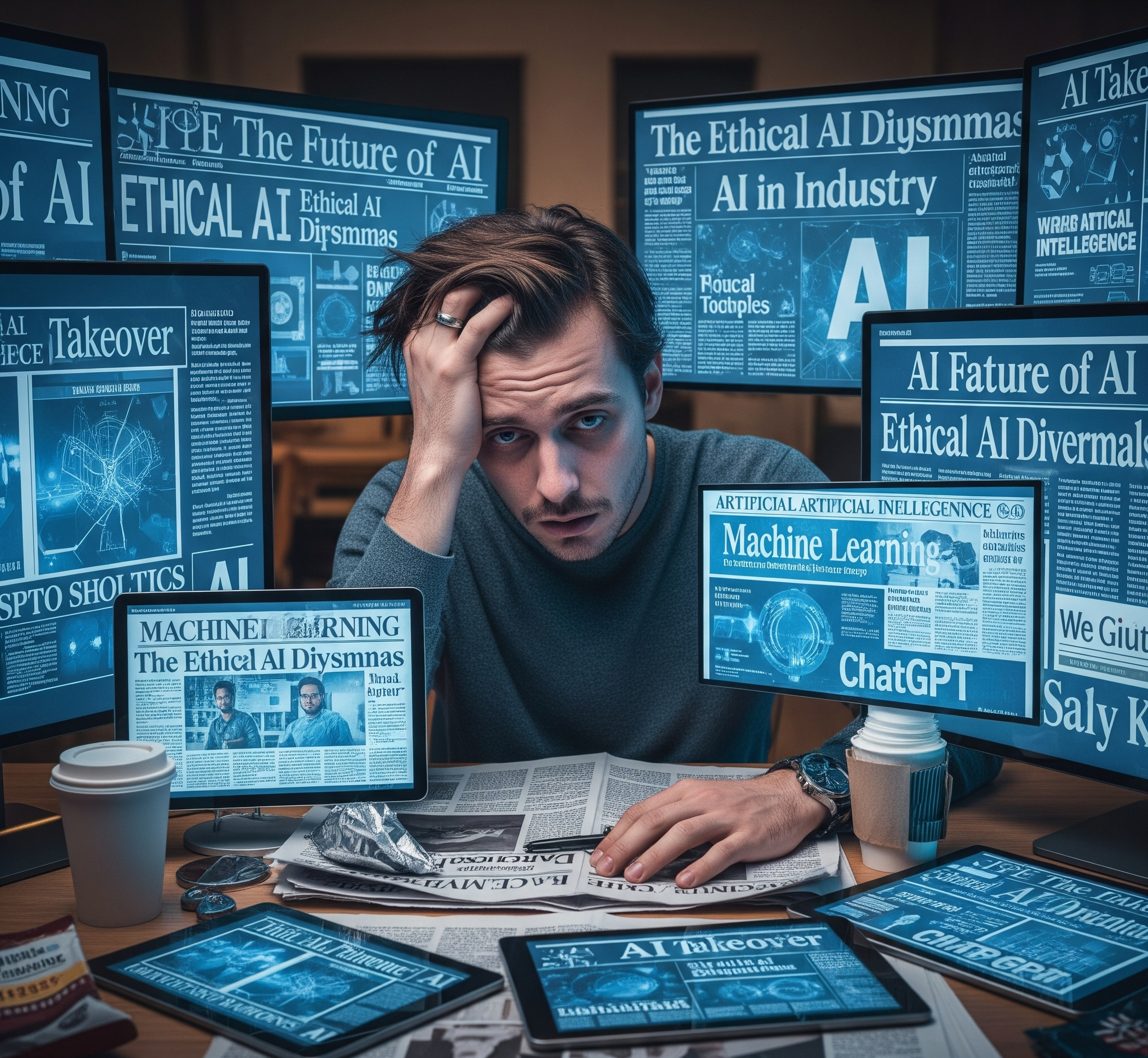By People You Think
Introduction
In 2023 and 2024, artificial intelligence was everywhere — in news headlines, corporate boardrooms, social media feeds, and product launches. By 2025, however, a new trend is emerging: AI fatigue.
This isn’t about rejecting AI technology. Instead, it’s about mental overload from constant AI talk, marketing, and hype. People are starting to ask: Do we really need another AI-powered product, article, or press release?
At People You Think, we explore what’s driving this fatigue, how it’s impacting the tech world, and what it means for businesses and consumers.
What Is AI Fatigue?
AI fatigue refers to the sense of exhaustion and skepticism people feel when they are constantly exposed to conversations, news, and promotions about artificial intelligence.
It’s similar to buzzword burnout — when a term gets overused to the point that it loses meaning. In the case of AI, this overexposure has led to public disengagement.

Why AI Fatigue Is Growing
1. Overexposure in Media
In 2015, AI was a niche topic. In 2025, it’s impossible to escape. News sites publish hundreds of AI-related headlines daily, even for topics where AI is only loosely connected.
2. Marketing Overload
Tech companies have started labeling nearly every feature as “AI-powered,” even when the technology behind it is minimal or unrelated. This overuse reduces trust and interest.
3. Unrealistic Promises
Some AI products have been oversold with claims of revolutionary impact that fail to deliver. When expectations don’t match reality, users feel disappointed.
4. Fear and Uncertainty
Alongside the hype, there’s constant talk of AI replacing jobs, deepfakes spreading misinformation, and machines outsmarting humans. This negativity can be mentally draining.
5. Lack of Real-World Connection
Many AI announcements sound exciting but don’t translate into improvements in daily life. Without tangible benefits, people tune out.
Signs of AI Fatigue in Society
- Lower Engagement with AI-related news stories.
- More Skepticism towards AI claims in marketing.
- Declining Excitement about new AI tools unless they offer unique, practical value.
- Increased Demand for Transparency about how AI works and its actual benefits.
Why AI Fatigue Matters for Businesses
For companies, AI fatigue is more than just a public mood — it’s a strategic challenge.
- Marketing Needs to Shift — Generic “AI-powered” labels no longer excite audiences.
- Proof of Value Is Key — Consumers want clear examples of how AI will save time, reduce costs, or improve their experience.
- Storytelling Over Buzzwords — Companies that explain the human impact of AI will cut through the noise.
How to Combat AI Fatigue
1. Focus on Benefits, Not Buzzwords
Instead of saying “Our tool uses AI,” say what it actually does for the customer. Example: “Cuts document review time from hours to minutes.”
2. Show Real Use Cases
Provide tangible, relatable stories of how AI solves real-world problems.
3. Be Transparent
Explain how your AI works, where it gets its data, and how you address bias and privacy.
4. Limit Overuse in Communication
Don’t force AI into the conversation when it’s not central to the message.
The Future of AI Hype and Fatigue
History shows that most technologies follow a hype cycle: massive excitement, overuse of buzzwords, public fatigue, and then a quieter period where the most valuable applications remain.
AI is now moving from the peak of hype into a more mature, results-focused phase. The companies that survive this transition will be those that can deliver real, measurable impact rather than relying on hype alone.
Final Thoughts
AI fatigue doesn’t mean the end of AI innovation — far from it. It means people want less noise and more value.
At People You Think, we believe that AI’s future lies not in constant hype, but in clear, meaningful applications that make life better. Businesses that understand this will stand out in the AI-saturated market of 2025.
Meta Description:
AI fatigue is rising in 2025 as overexposure, hype, and unrealistic promises leave people tired of hearing about artificial intelligence. Learn why and what businesses can do about it.










